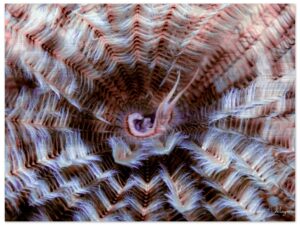Crinoids, also known as “sea lilies” or “feather stars,” are marine animals belonging to the phylum Echinodermata, which includes starfish, sea urchins, and sea cucumbers. They are ancient creatures with a rich fossil record dating back hundreds of millions of years. Crinoids are primarily filter feeders, using their feathery arms to capture plankton and other small organisms from the water column. They extend their arms into the current, trapping food particles on sticky mucus-covered tube feet and then transferring them to their mouth located at the center of the calyx. These fascinating creatures are found in oceans worldwide, ranging from shallow tropical reefs to deep-sea environments. They play important roles in marine ecosystems as both predators and prey, contributing to biodiversity and ecosystem health.
New Caledonia



















Reviews
There are no reviews yet.